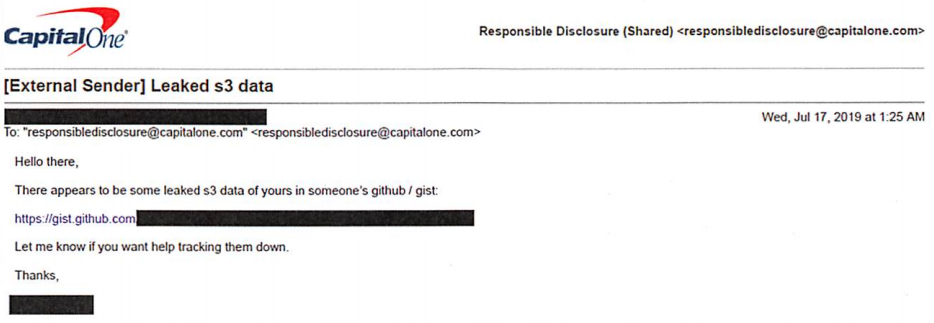Who Owns Your Wireless Service? Crooks Do.
jeudi 8 août 2019 à 00:43Incessantly annoying and fraudulent robocalls. Corrupt wireless company employees taking hundreds of thousands of dollars in bribes to unlock and hijack mobile phone service. Wireless providers selling real-time customer location data, despite repeated promises to the contrary. A noticeable uptick in SIM-swapping attacks that lead to multi-million dollar cyberheists.
If you are somehow under the impression that you — the customer — are in control over the security, privacy and integrity of your mobile phone service, think again. And you’d be forgiven if you assumed the major wireless carriers or federal regulators had their hands firmly on the wheel.

No, a series of recent court cases and unfortunate developments highlight the sad reality that the wireless industry today has all but ceded control over this vital national resource to cybercriminals, scammers, corrupt employees and plain old corporate greed.
On Tuesday, Google announced that an unceasing deluge of automated robocalls had doomed a feature of its Google Voice service that sends transcripts of voicemails via text message.
Google said “certain carriers” are blocking the delivery of these messages because all too often the transcripts resulted from unsolicited robocalls, and that as a result the feature would be discontinued by Aug. 9. This is especially rich given that one big reason people use Google Voice in the first place is to screen unwanted communications from robocalls, mainly because the major wireless carriers have shown themselves incapable or else unwilling to do much to stem the tide of robocalls targeting their customers.
AT&T in particular has had a rough month. In July, the Electronic Frontier Foundation (EFF) filed a class action lawsuit on behalf of AT&T customers in California to stop the telecom giant and two data location aggregators from allowing numerous entities — including bounty hunters, car dealerships, landlords and stalkers — to access wireless customers’ real-time locations without authorization.
And on Monday, the U.S. Justice Department revealed that a Pakistani man was arrested and extradited to the United States to face charges of bribing numerous AT&T call-center employees to install malicious software and unauthorized hardware as part of a scheme to fraudulently unlock cell phones.
Ars Technica reports the scam resulted in millions of phones being removed from AT&T service and/or payment plans, and that the accused allegedly paid insiders hundreds of thousands of dollars to assist in the process.
We should all probably be thankful that the defendant in this case wasn’t using his considerable access to aid criminals who specialize in conducting unauthorized SIM swaps, an extraordinarily invasive form of fraud in which scammers bribe or trick employees at mobile phone stores into seizing control of the target’s phone number and diverting all texts and phone calls to the attacker’s mobile device.
Late last month, a federal judge in New York rejected a request by AT&T to dismiss a $224 million lawsuit over a SIM-swapping incident that led to $24 million in stolen cryptocurrency.
The defendant in that case, 21-year-old Manhattan resident Nicholas Truglia, is alleged to have stolen more than $80 million from victims of SIM swapping, but he is only one of many individuals involved in this incredibly easy, increasingly common and lucrative scheme. The plaintiff in that case alleges that he was SIM-swapped on two different occasions, both allegedly involving crooked or else clueless employees at AT&T wireless stores.
And let’s not forget about all the times various hackers figured out ways to remotely use a carrier’s own internal systems for looking up personal and account information on wireless subscribers.
So what the fresh hell is going on here? And is there any hope that lawmakers or regulators will do anything about these persistent problems? Gigi Sohn, a distinguished fellow at the Georgetown Institute for Technology Law and Policy, said the answer — at least in this administration — is probably a big “no.”
“The takeaway here is the complete and total abdication of any oversight of the mobile wireless industry,” Sohn told KrebsOnSecurity. “Our enforcement agencies aren’t doing anything on these topics right now, and we have a complete and total breakdown of oversight of these incredibly powerful and important companies.”
Aaron Mackey, a staff attorney at the EFF, said that on the location data-sharing issue, federal law already bars the wireless carriers from sharing this with third parties without the expressed consent of consumers.
“What we’ve seen is the Federal Communications Commission (FCC) is well aware of this ongoing behavior about location data sales,” Mackey said. “The FCC has said it’s under investigation, but there has been no public action taken yet and this has been going on for more than a year. The major wireless carriers are not only violating federal law, but they’re also putting people in harm’s way. There are countless stories of folks being able to pretend to be law enforcement and gaining access to information they can use to assault and harass people based on the carriers making location data available to a host of third parties.”
On the issue of illegal SIM swaps, Wired recently ran a column pointing to a solution that many carriers in Africa have implemented which makes it much more difficult for SIM swap thieves to ply their craft.
“The carrier would set up a system to let the bank query phone records for any recent SIM swaps associated with a bank account before they carried out a money transfer,” wrote Wired’s Andy Greenberg in April. “If a SIM swap had occurred in, say, the last two or three days, the transfer would be blocked. Because SIM swap victims can typically see within minutes that their phone has been disabled, that window of time let them report the crime before fraudsters could take advantage.”
So far, there is zero indication that the U.S.-based mobile carriers are paying any attention.
In terms of combating the deluge of robocalls, Sohn says we already have a workable approach to arresting these nuisance calls: It’s an authentication procedure known as “SHAKEN/STIR,” and it is premised on the idea that every phone has a certificate of authenticity attached to it that can be used to validate if the call is indeed originating from the number it appears to be calling from.
Under a SHAKEN/STIR regime, anyone who is spoofing their number (and most of these robocalls are spoofed to appear as though they come from a number that is in the same prefix as yours) gets automatically blocked.
Unfortunately, Sohn said, the FCC has allowed the wireless carriers to adopt this approach voluntarily. And — shocker — most of them haven’t, or else they are charging a premium for it.
“The FCC could make the carriers provide robocall apps for free to customers, but they’re not,” Sohn said. “The carriers instead are turning around and charging customers extra for this service. There was a fairly strong anti-robocalls bill that passed the House, but it’s now stuck in the legislative graveyard that is the Senate.”
What about the prospects of any kind of major overhaul to the privacy laws in this country that might give consumers more say over who can access their private data and what recourse they may have when companies entrusted with that information screw up?
Sohn said there are few signs that anyone in Congress is seriously championing consumer privacy as a major legislative issue. Most of the nascent efforts to bring privacy laws in the United States into the 21st Century she said are interminably bogged down on two sticky issues: Federal preemption of stronger state laws, and the ability of consumers to bring a private right of civil action in the courts against companies that violate those provisions.
“It’s way past time we had a federal privacy bill,” Sohn said. “Companies like Facebook and others are practically begging for some type of regulatory framework on consumer privacy, yet this congress can’t manage to put something together. To me it’s incredible we don’t even have a discussion draft yet. There’s not even a bill that’s being discussed and debated. That is really pitiful, and the closer we get to elections, the less likely it becomes because nobody wants to do anything that upsets their corporate contributions. And, frankly, that’s shameful.”







